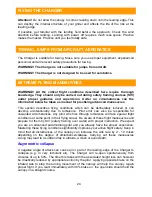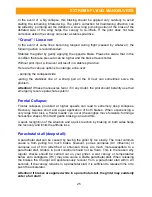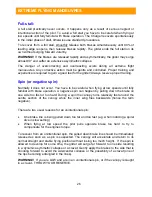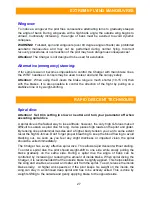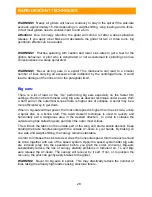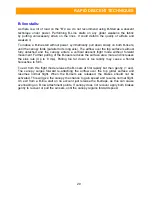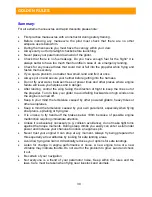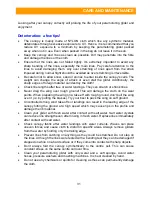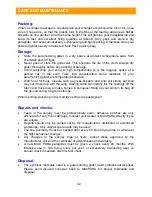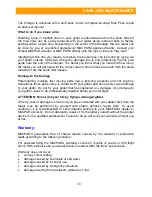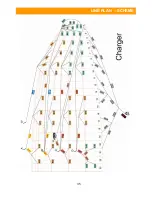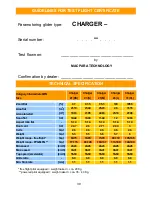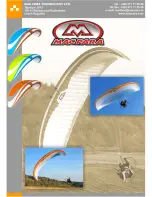
25
EXTREME FLYING MANOEUVRES
In the event of a big collapse, this braking should be applied very carefully to avoid
stalling the remaining inflated wing. The pilot's correction for maintaining direction can
be aided by pumping out the deflation; a slow, long pumping action of the brake of the
deflated side of the wing helps the canopy to re-inflate. If the pilot does not take
corrective action the canopy can enter a stable spiral dive.
“Cravat” / Line-over:
In the event of some lines becoming tangled during flight (caused by whatever), the
following action is recommended:
Stabilize the glider by gently applying the opposite brake. Please be aware that in this
condition the brake pressure can be higher and the brake travel shorter.
Without pilot input, a line-over will result in a stable spiral dive.
Here are the various options to untangle a line-over:
- pumping the collapsed side.
-pulling the stabilizer line or a sharp pull on the D riser can sometimes solve the
problem.
Attention!
If these manoeuvres fail or if in any doubt, the pilot should instantly use their
emergency reserve parachute system!
Frontal Collapse:
Frontal collapses provoked at higher speeds can lead to extremely deep collapses.
Recovery requires short and equal application of both brakes. When experiencing a
very large front tuck, a frontal rosette can occur (the wingtips move forwards: forming a
horseshoe shape). Short and gentle braking can avoid this.
A quick recognition of the situation and a quick reaction by braking on both sides helps
the recovery and limits the altitude loss.
Parachutal stall (deep stall):
A parachutal stall can be caused by having the glider fly too slowly. The most common
cause is from pulling too much brake, however, porous canopies (UV influence) or
canopies out of trim (stretched or shrunken lines) are much moresusceptible to a
parachutal stall. Gliders in poor condition should not be flown. This is the reason why
regular checks should be carried out on your glider. A wet canopy or temperatures
below zero centigrade (0°C) may also cause a stable parachutal stall.
When releasing
the brakes the Charger will spontaneously recover from a parachutal stall within 2-3
seconds. If the canopy remains in a parachutal stall, it is sufficient to release trims or to
push the accelerator.
Attention! If brakes are applied while in a parachutal stall, the glider may suddenly
enter a full stall!
Содержание CHARGER
Страница 1: ...1 ...
Страница 10: ...10 TRIMMING ...
Страница 35: ...35 LINE PLAN SCHEME ...
Страница 38: ...38 ...
Страница 40: ...40 ...














